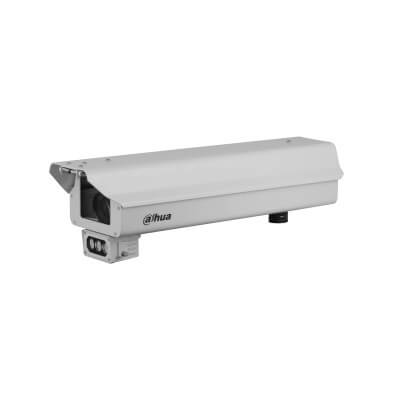Dahua Technology has developed a comprehensive Smart Traffic Management Solution that combines video surveillance with AI, ANPR, image fusion, AR and other cutting-edge technologies to meet the numerous requirements of present-day traffic enforcement and significantly optimize their operation and management.
Traffic congestion and road accidents are the toughest challenges faced by traffic management agencies across the world. With rapid global urbanization, the growing amount and type of vehicles has led to more road-related issues every year. According to a MarketsandMarkets report, the global number of cars and commercial vehicles on the road will nearly double by 2040, putting tremendous pressure on the existing urban infrastructure.
Various countries have formulated different traffic management development strategies across the globe, such as Saudi Arabia’s 2030 vision, Singapore’s "45-minute City" by 2040, Ukraine’s 2030 strategic, etc. Nevertheless, reducing traffic congestions by optimizing existing road capacities comes with hefty costs, not mentioning the huge amount of time it requires to collect evidence to enforce traffic violations. In addition, collecting massive amount of data to predict and regulate traffic is also not easy to accomplish, especially with traditional traffic systems.
 Traffic congestion is one of the toughest challenges faced by
Traffic congestion is one of the toughest challenges faced by
traffic management agencies across the world.
Thanks to the emergence of AI, IoT and sensor technologies, there have been ITS solutions that deliver new vitality in traffic enforcement and solve problems that affect traffic safety and efficiency. Dahua Technology, for instance, has developed a comprehensive smart traffic management solution that combines video surveillance with AI, ANPR, image fusion, AR and other cutting-edge technologies to meet the numerous requirements of present-day traffic enforcement and significantly optimize their operation and management.
This solution integrates traffic enforcement system, smart signal control system, traffic information release system, traffic flow collection and prediction system, as well as traffic management command and dispatch center. It assists traffic management agencies in improving road safety, reducing congestions, responding to emergencies more effectively, and making predictions on future traffic situations based on real-time data.
To give you further insight, here are the two highlights of the Dahua Traffic Management Solution:
1. Efficient traffic enforcement enabled by smart video technologies
Traffic violations like overspeeding, distracted driving, red light violation, unfastened seatbelt, pedestrian crossing, illegal lane changing, etc. are often the major causes of road incidents and injuries. Deploying traffic cameras with
automatic number plate recognition (ANPR) (e.g.
ITC952-AU3F-LZF1640 model) on accident-prone areas like intersections, crossroads, highways, flyovers and ramps enables operators to detect violations and verify incidents based on real-time monitoring.
 12MP all-in-one AI enforcement camera
12MP all-in-one AI enforcement camera
ITC952-AU3F-LZF1640
Dahua's license plate recognition algorithm supports number plate detection of of more than 100 countries and allows algorithm integration with multiple countries. It can detect both domestic and overseas vehicles from multiple countries and regularly updates based on customers’ number plate upgrading.
In 2015, Dahua successfully deployed violation detection systems to capture red light violations and overspeeding in Serbia’s 5 important cities. This project also involves developing a license plate recognition algorithm for Serbia and the European Union. Since the completion of the whole system, both the traffic violation rate and the accident rate in the monitored areas have been significantly reduced.
In addition, powered by AR technology and GIS integration, this Dahua solution also offers an AR Panoramic Platform that is connected to all frontend devices, and presents new labeling display system. By utilizing this high-point monitoring system, traffic enforcement units can efficiently respond to traffic alerts and situations in time.
2. Intelligent signal control and traffic flow data collection
Managing the increasing number of vehicles and traffic in the city has become more challenging than ever. Nevertheless, by utilizing a smart Signal Control system, road traffic situations can be accurately monitored and enhanced.
Dahua's intelligent Traffic Signal Control Solution is based on the lane-level traffic flow detection system. It can cover large scenes to detect multiple parameters such as lane flow, occupancy rate, queue length, traffic density, etc. With real-time data captured and analyzed, the traffic lights will automatically change based on the time of the day and actual road traffic conditions, which can help ease urban traffic congestions. Also, these collected traffic data can help city operators in optimizing road network planning.
 Dahua traffic signal control solution
Dahua traffic signal control solution
Moreover, equipped with high-sensitivity sensors and high-performance AI processors, the latest Dahua AI traffic camera utilizes deep learning algorithms to capture vehicle metadata and traffic flow in real time. The
ITC431-RW1F-L model, for example, uses advanced image fusion technology to display high-quality full-color images at night without the use of supplementary light, significantly reducing light pollution and providing a safer driving environment.
Global projects
The Dahua Smart Traffic Management Solution has been successfully implemented in more than 30 countries and regions around the world.
In 2019, Dahua developed a traffic management solution tailored for Riyadh, the capital city of Saudi Arabia with a population of over 8 million people. It involves front-end data collection and back-end big data application, achieving real-time and accurate signal release plan. Since its implementation, the overall traffic efficiency on monitored intersections in Riyadh has been increased by 12%, and around 1,000 traffic violations are being captured on daily basis.
And just last year, Dahua has built an integrated smart traffic management system for a country in Central Asia. This project involves violation detection system, traffic flow collection system, illegal parking detection system, intelligent video analysis system, speed measurement system, cloud storage and cloud computing system, covering 7 states, 17 cities, and nearly 300 intersections in the entire country.